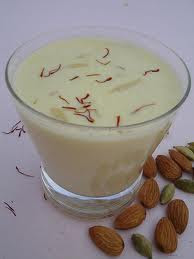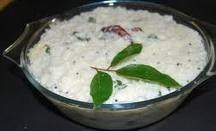 Fruits are the best weaning foods as they are easy to digest. They should be mashed and then given.
Fruits are the best weaning foods as they are easy to digest. They should be mashed and then given.Seasonal fruits like papaya, chikoo, apples, bananas are very healthy.
Mashed fruits are a good first weaning food. They are easy to digest and palatable to the baby.
You can also offer apples instead of bananas to your baby.
Take an apple and cut it into pieces, taking care to remove the center core. Boil it and then mash it either with a spoon or in a mixer.
Start with half an apple and increase it to the limit accepted by the child. It has been observed that many babies get constipation with apple. In this case, try other fruits like papaya.
 Other seasonal fruits
Other seasonal fruitsOther seasonal fruits like pears (to be prepared like apples), chikoo (simply mashed), papaya (simply mashed), mango (simply mashed) can also be given.
It has been observed that papaya helps soften stools if the baby is constipated.
1.Dal and rice kichidi
You will require 4 tablespoons of rice and 2 tablespoons of dehusked moong dal.
Prepare khichri by cooking rice and dal together, with a pinch of salt (added to taste).
Once khichri is cooked, you can add 2 teaspoons of ghee, butter or cooking oil to the final preparation.
You can also add vegetables like carrots or spinach to the khichri and then mash the mixture. If you want to add spinach, first boil, mash and strain it, and then add this puree to the khichri and stir it. Cool the khichri and serve lukewarm.
When the baby is still young, you should mash the entire mixture in a blender so that it is easy for the baby to swallow. You can gradually increase the consistency to a semi-solid state so that the child's palate starts getting used to regular foods.

Rice preparations are very healthy for the baby.If vegetables and pulses are added to the rice as in khichri then it becomes a full meal and is very nutritious and filling.Rice should be cooked well till tender. Here ate some recipes.
This is one of the simplest recipes of khichdi you can imagine. Great not just for sick people but also when you want to eat light after a heavy lunch. Skip adding ghee on top of khichri if you are calorie conscious.
2.Recipe of rice moong dal khichdi/
1 cup rice
1/2 cup moong dal (split, skinless green gram)
4 cups of water
1 tbsp ghee (clarified butter)
1/2 tsp cumin seeds
Salt to taste
1/2 tsp turmeric powder
A pinch of hing (asafoetida)
1/4 tsp red chilli powder
1. Wash and soak rice and moong dal for 10 minutes. Drain.
2. Heat ghee in a pressure cooker and add cumin seeds. When they turn darker, add hing.
3. Add rice, dal, salt, both the spice powders and water. Mix and close the lid of the cooker.
 3.Rice and milk payasam
3.Rice and milk payasamThis is a simple recipe to ensure that the child gets rice (for carbohydrates) and milk (for calcium). Mix 1 cup of boiled rice with 1 cup of milk and 3 tablespoons of sugar. Cook it on the gas for 10 minutes (keep stirring) and allow the mixture to thicken. Cool and serve lukewarm. You can also add badaam (almonds) scapings and elaichi powder for taste.
Proper cooking and feeding tips should be incorporated to avoid loss of valuable nutrients.
Feeding tips should be encouraged early in a child. Here are some tips for feeding and cooking tips.
4.Curd Rice(Yogurt)
1 cup boiled Rice
2 cups Yogurt (Curd)
2 tblsp Oil
1/4 cup Milk
Finely chopped Coriander Leaves
1-2 Green Chilies(optional )
1 tsp Chana Daal
1 tsp Urad Daal
1 tsp Mustard Seeds
1 1/2 tsp finely chopped Ginger
2 tblsp desiccated Coconut
1/2 tsp Salt

How to make curd rice :
In a saucepan heat 2 tablespoonful of oil.
Add mustard seeds to the oil.
When the mustard seeds start popping add chana and urad daal.
After a minute, add in the ginger, coriander and green chilies.
Saute them for a minute. Take the pan off the gas.
Add in the rice.
Mix the salt and desiccated coconut.
Just before serving, mix all the ingredients with yogurt (curd) and milk.
Feeding Tips
* Washing hands before and after meals should be encouraged.
* Children who do not eat enough at a time should be offered food every 2-3 hours. However, do not force your child to eat.
* Encourage the child to eat with a spoon or with his own fingers.
Cooking Tips
* Use less of sugar, salt and refined flour (maida or all-purpose flour) preparations.
* Unpolished rice or par-boiled rice is better than polished rice.
* Do not overcook vegetables, they lose their nutritive value.
* Do not cook fruits since the essential vitamin C is lost.
* The skin of many vegetables is rich in vitamins and minerals, so offer fresh fruits to the child with their skins.
* Wherever possible, use jaggery instead of sugar, since it is very high in iron.
* Avoid adding too much spice.
Organic food contains higher levels of vitamins and essential minerals
You have realised your child is a very fussy eater. You make the most delicious foods for him, but he will not eat. You try to distract him with toys, but that doesn't work either. You've tried the high chair, the swing and the garden, but he simply refuses.
Comments
healthy children's recipes
healthy children's recipes
i really like to read more about your articles and help you to promote it!
baby clothes